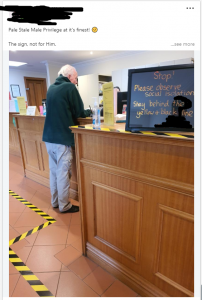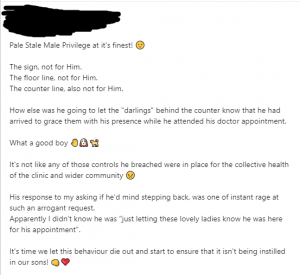Rivers of Thought
Life, Leadership, Business & Technology

You may recall last month’s Leadership Q&A. Or…you may not…afterall it came out March 10…right before our world changed. At any rate, here is a link to Should I Stay or Should I Go.
Obviously a lot has changed in the month since. Many of you may have had the choice made for you through a reduction in force (RIF), layoff or furlough. (Know the differences!) You may now be among the 100’s of thousands who have lost their jobs. You may be asking yourself or others, “Now What?”
My answer to last month’s question is right where I recommend starting to answer this month’s question: Reflection!
Step One: Reflection
One of the exercises I recommend to anyone who is in transition is to make a Top Ten List (borrowed from Letterman, but not nearly as funny). Actually, I recommend three top ten lists:
- Top Ten things you would use to describe the perfect job
- Top Ten things you would use to describe the perfect boss
- Top Ten things you would use to describe the perfect company
Then force rank each list 1 to 10 (no ties).
Step Two: Journal
If you follow my writing, you know I am a big fan of keeping a journal. There are many benefits to writing in a journal. In his post “10 Surprising Benefits You’ll Get From Keeping a Journal” on Huffington Post, contributor Thai Nguyen describes some of the benefits you will get from journaling. At least three (and probably all ten) will help you in your transition: achieving goals (your goal is to probably find a new job); healing (you may not be physically injured or ill, but you HAVE suffered a trauma); self-confidence (you may be questioning yourself and your skills right now).
I’d like to add a couple more benefits to the list. Keeping a journal can help you process what has just happened. You want to work through those emotions before you start to network for your next position, and certainly before you go on your first interview. You need to make sense of what has just happened. Writing it down gives you the ability to reflect on your thoughts, feelings, and plans. You can refer back to your writing to see how your thoughts, feelings and plans have evolved over time.
The other benefit I’d like to point out, is it helps to keep you organized. You will be busy in the days and weeks to come. It will be easy to forget some things and “misremember” others. Having a record of your daily thoughts and activities will help you to keep it all straight.
My wish and my promise
I wish you success on our journey to your next opportunity. My wish is that you find peace among the chaos, clarity among the confusion, and confidence among the doubt!
My promise is if there is anything I can do to help along the way…ask! Send me an email, connect with me on LinkedIn, let me know how I can help.
 Our world has changed, seemingly overnight! If your LinkedIn newsfeed is anything like mine (and I am sure it is) it is full of posts and shares with advice. Advice for getting through the crisis that is still unfolding around us. Advice coming from all angles and perspectives. Advice delivered in many unique ways.
Our world has changed, seemingly overnight! If your LinkedIn newsfeed is anything like mine (and I am sure it is) it is full of posts and shares with advice. Advice for getting through the crisis that is still unfolding around us. Advice coming from all angles and perspectives. Advice delivered in many unique ways.
Just this morning as I read through my feed: Advice on creating a safe place for employees in the form of a blog (thanks Doug), advice on storying telling in the form of a #BedTalk (thanks Alex), advice on being annoyingly optimistic also in the form of a #BedTalk (thanks Dimple), advice on being in a place of gratitude delivered as a #ParkTalk (thanks Brad), advice on dozens and dozens of ways to lead delivered as posts, free virtual meetings, virtual happy hours and webinars. To all those leaders who are sharing their words…THANK YOU!
What do all these posts have in common? What is the Number One thing you can do as a leader in this time?
Be Visible
What do their posts have in common? The people posting them are being visible. They are out there: sharing their thoughts, making us smile, giving advice. They are leaders. They are visible.
What is the Number One thing you can do as a leader in this time? BE visible!
I love the story I was told yesterday about a CEO who is sending a weekly email to his entire organization. In it he is very transparent about the impacts to the business, he celebrates the wins, and he asks, genuinely asks, his employees how they are. He encourages them to reach out to him…and when they do…he responds. VISIBLE.
In similar fashion, a friend of mine is sending a weekly email to the entire company. In his email he talks about his own personal journey through the work-from-home mandates. Sometimes humorous, sometimes poignant, always encouraging? Sound a lot like the first story? Here’s the thing. He is three or four levels removed from the CEO; he’s a “middle manager”. He’s VISIBLE.
Another, a CEO. She attends every team meeting she can each week. Dozens of them. Even if only for a moment. She is there. On video. Offering encouragement. Sharing herself. Dog barking in the background, kids videobombing, being real, being human. Being VISIBLE.
The Challenge
My thought for you this week, my challenge for you is to be VISIBLE. Your teams, your company, your colleagues are looking for you. Your presence provides comfort. Your words provide hope. Your smile provides encouragement. BE visible.
I would love to hear your examples. How are YOU being visible? How are the leaders in your organization being visible? Post in the comments; post on the social media platform of your choice (use #BeingVisible); send me an email. BE visible!
Could This Be Your Father As Well?
I was scrolling through my LinkedIn newsfeed as I tend to do several times a day, when I saw a post.
A post I can’t get out of my mind.
 I’m not sure what caught my attention first, probably the image. But with a glance so quick, I didn’t comprehend the context – other than the man.
I’m not sure what caught my attention first, probably the image. But with a glance so quick, I didn’t comprehend the context – other than the man.
Then I saw the opening lines.
“Pale Stale Male Privilege at its finest!
The sign, not for him.”
The sign…what sign…oh, that sign, now I see it.
What yellow and black line? Oh, that yellow and black line, now I see it. (note: apologies for the blurring of the sign – whoever posted this was reflected therein.)
I had to click “see more”…
The Comments
What followed can best be described as a snarky commentary on this man.
The comments that followed the post were 13 – 2 in the same tone. Because…
- he was standing on the wrong side of the tape–he must feel he is privileged.
- of the words he used–he must be a misogynist.
- of his reaction when confronted–he must be angry.
I looked back at the picture.
It haunted me.
The Man, The Father
The man in the picture. Standing at the counter. Speaking with the staff behind the counter. Probably oblivious to the sign (I missed it at first glance), probably oblivious to the line taped on the floor (I hadn’t noticed it either).
After all, he’d been in this office dozens of times before. He doesn’t see well – doesn’t pay attention to details. He probably never saw the tape on the floor. Same reason he lost his driver’s license a year or two before.
Suddenly, I didn’t see an unknown figure.
I saw my father.
The Dementia, The Father
I saw my father as he began to struggle with the onset of dementia. No way Dad sees that sign. No way Dad sees the tape. Dad can’t even comprehend what is happening in our world.
And his comments to the staff behind the counter? Calling them “darlings” and “lovely ladies”?
There are many forms of dementia. Not everyone who has dementia has the memory problems of someone with Alzheimer’s.
My father had frontotemporal dementia (the behavioral variant frontotemporal dementia [bvFTD]).
This was the Reverend Doctor Ton. The pastor of pastors. The leader of leaders.
This was the man who was a champion of the civil rights movement in the 60’s and 70’s. He was the man who stood up for the rights of the LBGTQ community in our churches.
My father was the man who hired the first female executive minister in the entire denomination, who first put women on equal footing in church leadership, who promoted women in the ministry every chance he had.
And yes, this was the man, who at the end of his life, flirted inappropriately with waitresses, nurses, friends and acquaintances.
Why? Because he was a “Pale Stale Male”? Or because he was a “good boy”?
Because bvFTD is a type of dementia that attacks the brain in such a way as to make you lose cognitive ability.
It attacks the brain in such a way as to make you lose your social filters. It attacks the brain in such a way as to make you lose the ability to effectively process language.
The Fear, The Father
At the end, my father had the cognitive ability of a five-year-old.
His social filters were basically gone.
Can you imagine the fear felt as your world closes in around you? As your ability to make sense of things diminishes? You have the memories of an 87-year-old, but can’t comprehend the sign in front of you?
And then some stranger points out you are doing something wrong – while you have no idea what it is that you are doing wrong?
Even though I am an “old white guy”, I am a champion for diversity and inclusion.
I am an ally.
I believe in speaking up.
We Are In This Together
I don’t know the man in the photo, nor do I know the poster, nor was I in the room during the exchange between them.
What I do know is that we are all in this COVID-19 reality together.
We need to show each other grace and not assume we know someone’s motivations, their attitude, their fears, or their confusion.
Let’s help each other – let’s support each other.
That man is probably someone’s father.
In a few years, that man could be me…or you.

Insights is the weekly, thought-provoking newsletter from Jeffrey S. Ton.
Every Tuesday – Delivered to your inbox.
A different focus each week:
Leadership Thought – A lesson-learned, an insight shared
Leadership Q&A – A response to a reader’s or a connection’s question
Leadership Spotlight – A highlight of a person or company helping others to grow their leadership
Rivers of Thought – A more personal thought, observation or musing





